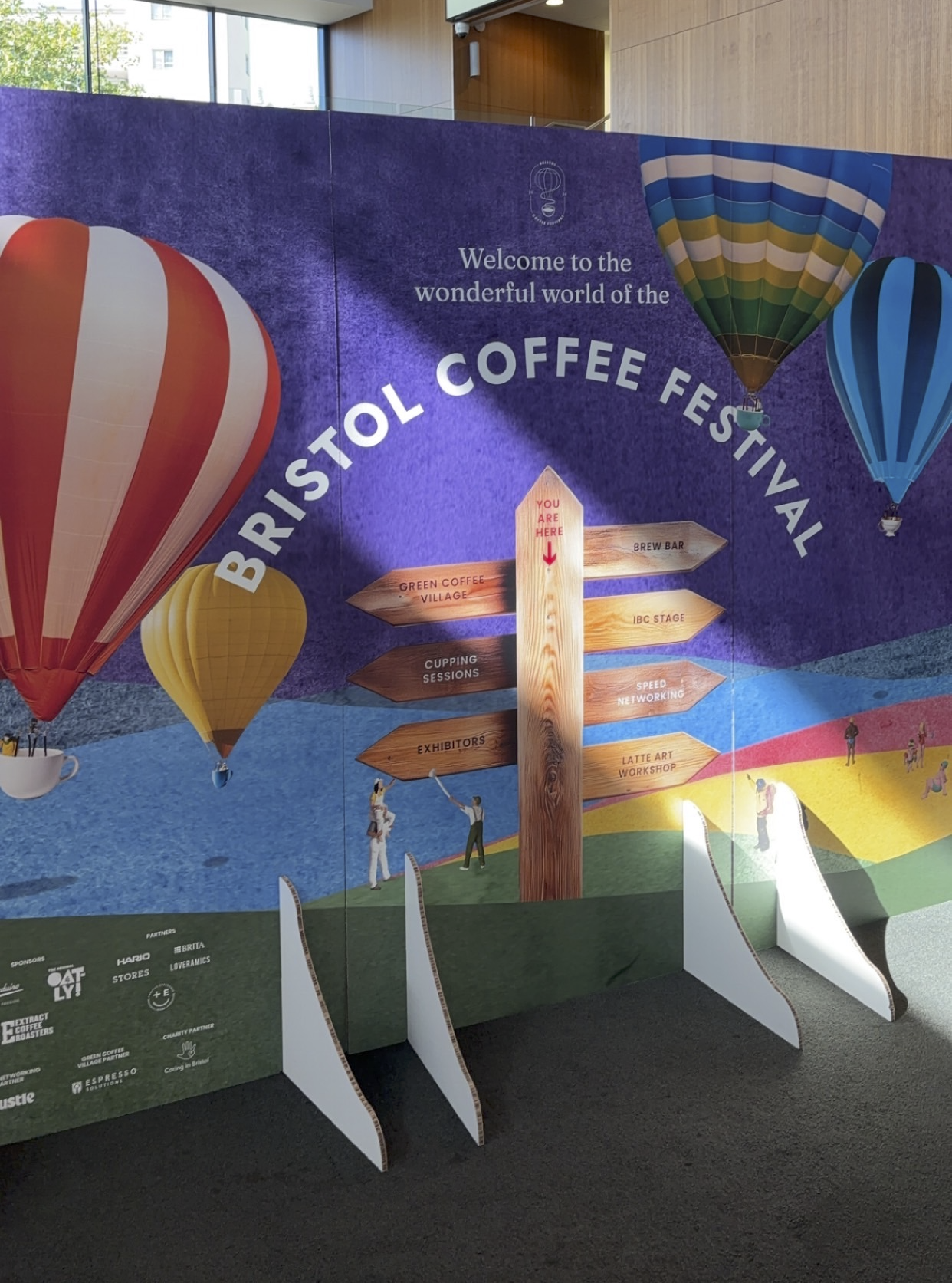When I said I’m gonna write about my random technical thoughts, I never said it has to be software or mathematical. Brewing coffee is pretty technical I reckon.
I attended the Bristol Coffee Festival last Saturday (14 September 2024) and drank almost enough espresso to make my general admission ticket worth it. While being super caffeinated, I had a good amount of chat with some of the 100+ coffee roasters and baristas that were there. Needless to say, I learnt a lot. Now I’m sure I could find this knowledge on YouTube if I spend enough time watching James Hoffman’s videos or simply in r/Coffee or r/JamesHoffman if I spend enough time there. However, nothing beats a good conversation with a knowledgable person where you can ask questions and get direct feedback.
Here are several things I learnt.
Latte art is a function of coffee crema and milk texture
I’ve been trying to learn latte art for a long time now, stretching all the way back to December 2020, wasting a lot of milk in the process. I never had professional guidance, I just kind of do it by trial and error, and it just never worked out nicely. I had suspicions for why it didn’t work out though, and I’m glad I finally confirmed my suspicions with professional baristas.
It turns out that the body of the coffee matters. Pulling a latte art on runny espresso is difficult; on a filter coffee even worse. So step one is to pull a good shot of espresso – which translates to first getting a decent espresso machine.
Secondly, the milk texture is crucial. This means, the milk has to be aerated properly – so not only the surface that you can see but also the body beneath it too. I finally have someone telling me how to do it properly. It turns out, heating the milk to 65 degrees is key, and 65 is quite hot. This means that the milk pitcher will be hot and you can just know when to stop steaming by feel. The milk pitcher will be hot. It was very hot when I did the run. It was hot. It was very hot.
Taste converges with roast timing
The people at Clifton Coffee Roasters taught me a good chunk about coffee notes. I came in with the universal skeptic question of “are coffee notes even real?”. You know this question can trip some coffee snobs for sure, but the peeps at CCR were very cool in explaining it.
It turns out that the coffee notes are indeed real, and they proved it to me by giving me a taste of their range of filter coffees which were processed in different ways – natural, washed and a mixed process. You see, coffee meant for filter are usually lighter roasted and so the notes are preserved. Otoh, coffee meant for espresso is darker roasted so that is is more soluble, inducing a thicker body. If you go to a specialty coffee shop where there is some expectation that people order espresso for the sake of espresso, they will have a range of roasts for you to choose from, but most importantly, they will be mindful that some people will be ordering the espresso for the taste and not the milk.
Otoh, the thing with coffee chains like Pret, Costa or Nero is that there is an almost universal understanding that people will come for milk-based coffee; and milk-based coffee has an espresso a base (has to be a truly shitty coffee chain if they use filter coffee as a base, right *cough* Greggs *cough*?). But for milk-based coffee, the milk will almost always dominate the coffee taste right. So in that sense, it doesn’t really matter how dark the roast is for the espresso, you just need it to be dark. How dark? Well, it’s easier to just roast them super dark rather than trying to find the right amount of darkness. As long as it’s dark, it’s soluble, so you can extract an espresso done. And this is what coffee chains do, which explains why their espresso tastes more or less the same – terrible.
And what’s the price of doing a very dark roast? You lose the coffee notes.
